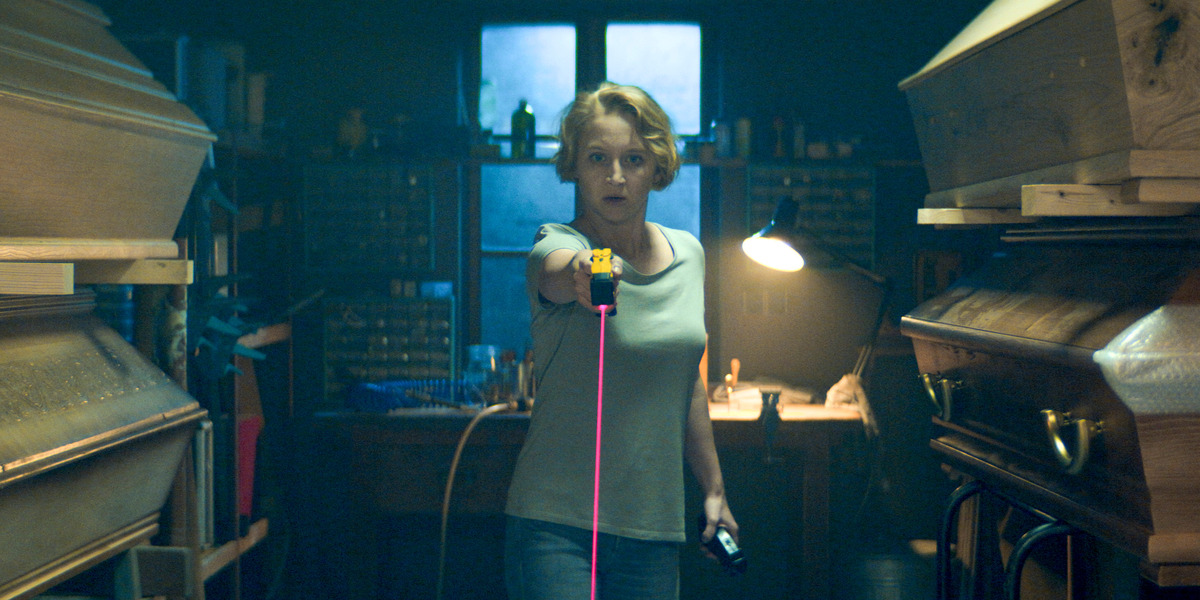Netflix’s ‘Woman of the Dead’ (also known as ‘Totenfrau’) is an Austrian-German thriller series created by Benito Mueller, Wolfgang Mueller, and Barbara Stepansky. The crime drama series revolves around Brünhilde Blum, a woman who runs a funeral home in a ski resort. However, when her husband, Mark, dies in a hit-and-run case, she is devastated.
As Blum searches for closure, she discovers the complex chain of secrets and lies connected to Mark’s death. Given the show’s handling of mature themes through a woman’s search for answers about her husband’s death, the riveting narrative leaves an impression of realism. But is the story rooted in reality?
Woman of the Dead is Based on Bernhard Aichner’s Novel
‘Woman of the Dead’ is an adaptation of author Bernhard Aichner’s German novel ‘Totenfrau.’ The book was first published in 2014 in German and later translated into other languages. It was released in English under the title ‘Woman of the Dead.’ Aichner began his career as a photographer and published his first writing work in 2000 as ‘Babalon,’ a short story collection. ‘Totenfrau’ is one of the author’s universally acclaimed works, and he has expanded the story into a trilogy of novels.

In an interview, Aichner stated that the idea of the story came from a desire to explore the themes of death and mortality. He explained that he has dealt with death voluntarily and involuntarily in his life. As a result, the author became fascinated and frightened by death at the same time. Therefore, it is a primary theme in his writing, and it is evident in the novel through Blum, who works as an undertaker at a funeral home and deals with her husband’s demise.
While writing the book, Aichner explored death further and how it affects humans. Therefore, he interned at a funeral home and explained that the experience helped reduce his fear of mortality. Although the process at the funeral home initially felt scary and unnatural, Aichner soon became accustomed to it. His internship likely helped inform the depiction of Blum in the book, especially her emotions and the varied reactions to the deaths around her.
Another prevalent theme in the book is evil. The writer explores the concept of evil in every person through Blum’s story. He explained that the thought of evil residing within everyone is scary and intriguing and can often take over at any given moment. The same is evident in the story through the emphasis on religious subtext and the choices certain characters make in the face of adversity. As a result, the story becomes morally convoluted and grounded in reality as we understand the motivations behind the crimes committed by several characters.
‘Woman of the Dead’ is adapted for television by Benito Mueller, Wolfgang Mueller, and Barbara Stepansky. While the Netflix show mainly follows the book’s plotline, it makes some cosmetic changes to the source material. In the book, Blum’s funeral home is in Innsbruck, but the TV series places it in the Tyrolean mountains. Similarly, Blum’s book counterpart has two daughters in the novel, whereas, in the show, she has a daughter and a son.
The changes mentioned above do not affect the overall narrative, making the show a mostly faithful adaptation of Aichner’s novel. Ultimately, ‘Woman of the Dead’ is not based on a true story. It is a fictional tale that examines a human’s relationship with death. Moreover, it explores the themes of death, mortality, and evil and how they affect a person’s morality. Given the character-driven approach to these themes, the narrative exudes a sense of realism despite being fictional.
Read More: Where is Netflix’s Woman of the Dead Filmed?


You must be logged in to post a comment.